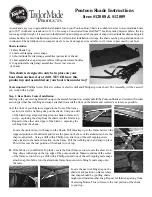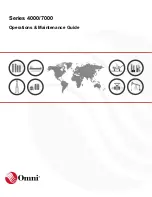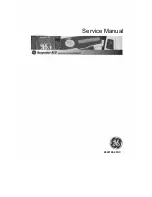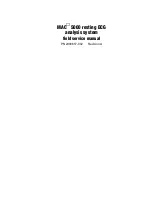
6/16
it is correct, as this depends to a great extent on:
- axis acceleration and angular velocity;
- the angular offset between the sensors;
- cam design (duty cycle);
- the reaction time of the sensors used.
4.4 Increase of number and load capacity of contacts
If necessary the number and the load capacity of output contacts can be increased by
using external contactors with forcibly guided contacts
Feedback circuit for external contactors
with automatic start
Feedback circuit for external contactors
with manual or monitored start
K8
K7
K7
K8
F
-
+
Tx
Ix
24 Vdc
OS1
OS2
K8
K7
K7
K8
F
-
+
Tx
Ix
24 Vdc
OS1
OS2
In order to function correctly, any modules or PLCs connected to the OSx safety elec-
tronic outputs must be able to withstand cyclical deactivation tests performed on the
same.
5 INTERNAL WIRING DIAGRAM
P1
P2
T02 ... T04
T01
J26 ... J28
J25
F1B ... F2B
F1A
OS2
0V
OS3
O02 ... O04
O01
OS4
24V
OS1
A3
A4
J46 ... J48
J45
F3B ... F4B
F3A
A5
A6
A1
A2
I22 ... I44
I21
6 SIGNALLING
PWR LED
LEDs
P1, P2
Possible fault cause
Off
Off
No power supply, incorrect connections, power wires cut, external fuses
broken.
Module fault.
Green
Off
Normal operation.
Green
Red
Non-restorable fault.
Recommended action: send module for repair.
Green
Red x 1
Blue x 1
Restorable fault: overcurrent on Tx or Ox outputs.
Recommended action: disconnect the semiconductor signalling outputs
(Ox) and the test outputs (Tx) to check whether an external short circuit
is present.
Green
Red x 1
Blue x 2
Restorable fault: problem detected on OSx (short circuit towards earth or
positive pole, or else short circuit between two OSx).
Suggested action: Disconnect the safety outputs to check if there are any
problems on the external connections of the OSx outputs.
Green
Red x 1
Blue x 3
Restorable fault: module temperature outside the limits.
Suggested action: restore module temperature to within permissible limits.
Green
Blue x N
Module entered ERROR state at the request of the application program.
Error code N. Typically due to incorrect input conditions (external short
circuits, status not permitted).
Suggested action: disconnect the inputs to find any short circuits. Check
the documentation supplied with the application program for further
details.
7 INSTRUCTIONS FOR PROPER USE
7.1 Installation
Attention: Do not exceed the tightening torque of the terminal screws specified
in the present operating instructions.
Attention: Observe the wiring of the terminals: incorrect wiring can damage the
device which may result in loss of the safety function.
Attention: This is a complex device, designed to provide safety functions to
protect machine operators. The hardware and software of this device, external devices,
general circuit design and building, are all essential if specific safety goals are to
be reached. Therefore, only qualified operators with suitable knowledge of electrical
systems and safety regulations should install this device and put it into service.
- Install only inside a cabinet with protection degree not less than IP54 according to
EN 60529.
- Always affix the device with the specific DIN rail adaptor acc. to EN 60715.
- Do not stress the device with bending and torsion.
- Do not modify or open the device for any reason.
- The device carries out an operator protection function. Any inadequate installation
or tampering can cause serious injuries and even death, property damage, and eco-
nomic losses.
- These devices must not be bypassed, removed or disabled in any other way.
- If the machine where the device is installed is used for a purpose other than that
specified, the device may not provide the operator with efficient protection.
- The safety category of the system (according to EN ISO 13849-1), including the
safety device, also depends on the external components connected to it and their
type.
- Before installation, make sure the device is not damaged in any part.
- Before commissioning, check the correct functioning of the module.
- Avoid excessive bending of connection cables in order to prevent any short circuits
or power failures.
- Do not paint or varnish the device.
- Do not drill the device.
- Do not use the device as a support or rest for other structures, such as raceways,
sliding guides or similar.
- Before commissioning, make sure that the entire machine (or system) complies with
all applicable standards and EMC directive requirements.
- The documents necessary for a correct installation and maintenance are always
available in the following languages: English, French, German and Italian.
- This device can only be installed and used if all these technical instructions and all
safety regulations relevant for the application have been observed and implemented.
- Should the installer be unable to fully understand the documents, the product must
not be installed and the necessary assistance may be requested from the manufac-
turer (see paragraph SUPPORT).
- Always attach the following instructions to the manual of the machine in which the
device is installed.
- These operating instructions must be kept available for consultation at any time and
for the whole period of use of the device.
7.2 Do not use in the following environments
- In environments where continual changes in temperature cause the formation of
condensation inside the device.
- In environments where the application causes the device to be subjected to strong
impacts or vibrations.
- In environments with the presence of explosive or flammable gases or dusts.
- In environments containing strongly aggressive chemicals, where the products used
coming into contact with the device may impair its physical or functional integrity.
- Prior to installation, the installer must ensure that the device is suitable for use under
the ambient conditions on site.
7.3 Maintenance and functional tests
Attention: Do not disassemble or try to repair the device. In case of any malfunc-
tion or failure, replace the entire device.
- The device installer is responsible for establishing the sequence of functional tests
to which the device is to be subjected before the machine is started up and during
maintenance intervals.
- The sequence of the functional tests can vary depending on the machine complex-
ity and circuit diagram, therefore the functional test sequence detailed below is to be
considered as minimal and not exhaustive.
- Perform the following sequence of checks before the machine is commissioned and
at least once a year (or after a prolonged shutdown):
1) Check that the safety module housing is undamaged and in good condition. If the
housing is damaged, replace the entire device.
2) Check that all signalling LEDs are working.
3) Check that the electrical cables are firmly lodged inside the terminals and connectors.
4) Check that the module functions as required by the application program.
- The device has been created for applications in dangerous environments, therefore
it has a limited service life. Although still functioning, after 20 years from the date
of manufacture the device must be replaced completely. The date of manufacture is
placed next to the product code (see paragraph MARKINGS).
7.4 Wiring
Attention: Do not install the safety module if voltage is present. Power the device
only when the electrical circuits have been completely realized according to the speci-
fications indicated in the OPERATION paragraph. The first time you start the machine
ensure that there are no people close to hazardous areas.
- Check that the supply voltage is correct before powering the device.
- Keep the charge within the values specified in the electrical operation categories.
- Only connect and disconnect the device when the power is off.
- when using plug-in-type terminal blocks, they may only be plugged in or unplugged
if no supply voltage is present.
- Discharge static electricity before handling the product by touching a metal mass
connected to earth. Any strong electrostatic discharge could damage the device.
- Power the safety module and the other devices connected to it from a single SELV
source and in accordance with the applicable standards (applies only to versions with
supply voltage 12 V and 24 V).
- Plug-in type connectors, and in particular those of the output contacts of relays
(when installed) may be powered by high voltage.
- It is recommended that the supply voltage of the safety module be electrically iso-
lated from the power section of the machine and the connection cables of the module
be laid separately from the power cables.
- Always connect the protection fuse (or equivalent device) in series with the power
supply for each device.
- Always connect the protection fuse (or equivalent device) in series to the safety
electrical contacts.
- During and after the installation do not pull the electrical cables connected to the
device. If excessive tension is applied to the cables, the device may be damaged.


































